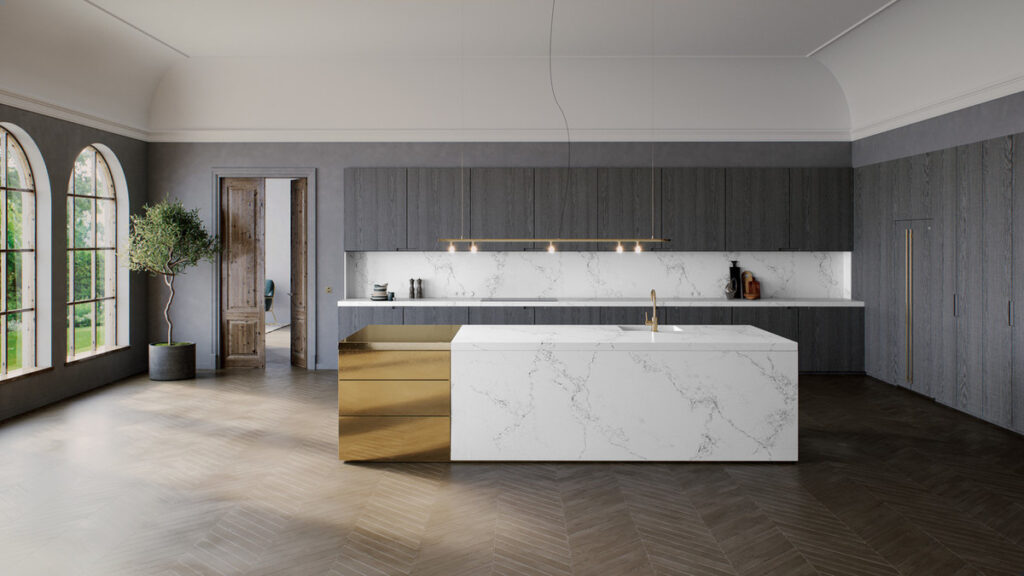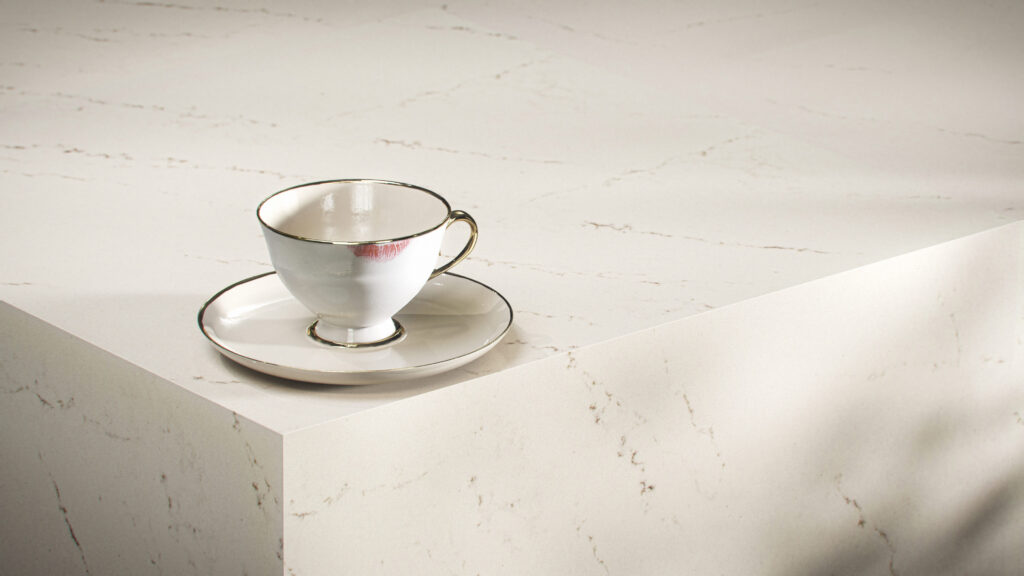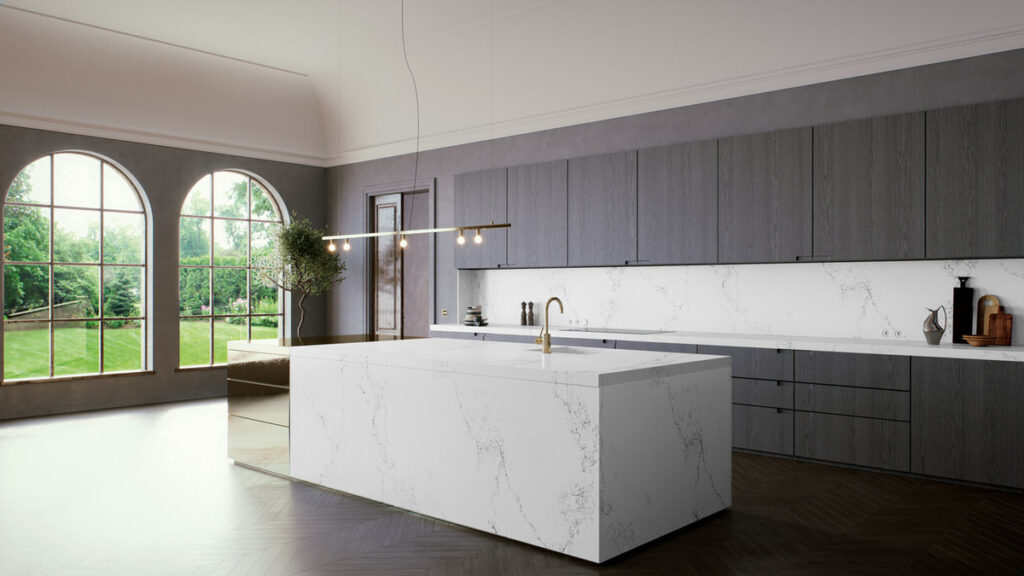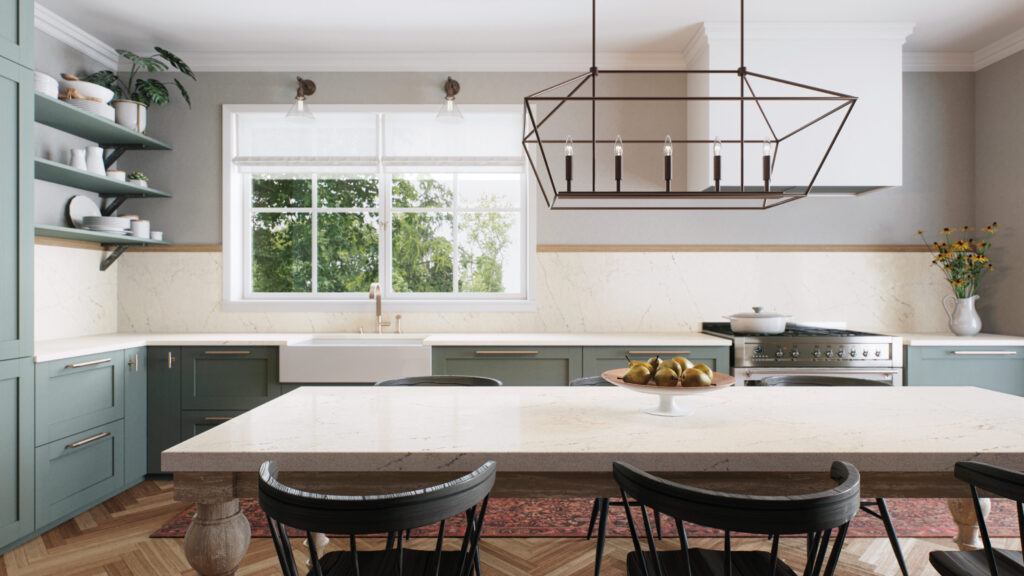Quartz vs Quartzite Countertops: What’s the Difference?
5 min read
The names of these two countertop materials are misleading. They sound similar but they aren’t, and it’s important that you know how they differ before you determine which material is right for the countertops in your home.
The ideal countertop will hold up to use without significant wear and tear. When building a new home or remodeling a kitchen, selecting kitchen countertop materials that won’t hold up to normal use in your space is a bad investment.
Read on for more about the difference between quartz and quartzite.

Kitchen counters go through a lot on a daily basis. They have things spilled or dropped on them and people lean or put their hands on them all day. Your kitchen surfaces need to last and tolerate heavy use.
If you are thinking about upgrading your current kitchen counters, you have probably already realized that there are many countertop materials to choose from. Each of these materials will have pros and cons to weigh when making your decision.
Always keep in mind the normal daily use that kitchen counters are subjected to before deciding what countertop material is right for you. This decision cannot be based on the countertops look alone.
Quartz and quartzite are two of the most popular countertop materials on the market today and there are some major and very important differences between them. Consider these differences before you choose the right countertops for your home.

While this can sound like the better option, there are some factors that need to be considered when you elect to use a natural material for this type of project. Natural materials are not always better than manufactured materials.
Quartzite is formed slowly over time and as a result, is more porous than quartz. This means that quartzite will absorb spills and stains and it will also pick up and store grime and bacteria. Because it is so porous, quartzite will also need to be sealed properly to help prevent pitting, scratches, stains, and other damage.
The sanding down and sealing process for quartzite must be done at least once a year, but surfaces like kitchen counters that are used daily, may actually need to be resealed even more frequently. If you drop something heavy on your quartzite counter, or scratch it, the counter will need to be sanded and resealed to repair the damage. The cost of this can really add up over time, especially in a kitchen that sees lots of use.
Quartz, on the other hand, is a manufactured product. This means that it will not stain, pit, or scratch. It also does not need to be sealed or given special care to protect it from normal use. Quartz is more resistant to absorbing stains, grime, and bacteria as well, which makes it a much better choice for high-traffic areas like the kitchen.

Quartzite only comes in shades of light grey or white with occasional veining and flecks of blue, red, or green. Quartzite is not very consistent in colour either, making it difficult to match up seams and edges.
Many people envision quartzite showing distinct colour patterns like marble, but marbling is not common in quartzite. Quartzite is far more minimal in colour variation than many other naturally occurring materials that can be used for countertops.
Quartz comes in any colour or pattern that you can think of. This is one of the biggest benefits of manufactured materials. For a marbled pattern in your counter, quartz can do that. For blue counters, this is also possible with quartz.
Due to the porous nature of quartzite, it can be tough to install. Sometimes cutting a section, or attaching it, can lead to it breaking. You will always have to buy excess material to complete a job.
Additionally, quartzite is not strong enough to be cut into many unique shapes and patterns. Due to its fragility, only the most basic counter styles can be installed with quartzite.
Quartz, on the other hand, can be cut into any shape or size that you need. It is also easy to install because it is not fragile. As it is easy to cut and install, you can buy just enough for your space, saving you money and reducing waste.

As with nearly all naturally occurring materials, quartzite can be expensive. The average cost per foot for quartzite at the time of this article is $70 to $200. In addition to this, you will need to buy excess quartzite than is necessary in case there is breakage during installation.
If you are working with large spaces, you may need to buy quite a lot of excess quartzite to match each piece and complete your counter installation. On top of that, damage may occur during installation resulting in the need to purchase even more quartzite.
Quartz will run you $60 to $150 per square foot. This is because quartz is manufactured and does not have to be sourced in the same manner as quartzite. Excess material is not required because quartz offers consistency across each slab.
Perhaps best of all, damage during installation or cutting of quartz is rare. Overall, quartz can save you thousands of dollars for a whole host of reasons.
In the discussion of quartz vs quartzite, there really is no comparison. While the natural appearance of quartzite can be very beautiful, quartz is just as attractive, comes in more colour options and offers more practicality for use in high traffic areas.
Quartz is a superior product and the perfect foundation for a gorgeous kitchen which will stand up to daily use for many years to come.
{{ subtitle }}
{{ i.desc }}
{{ subtitle }}
{{ subtitle }}